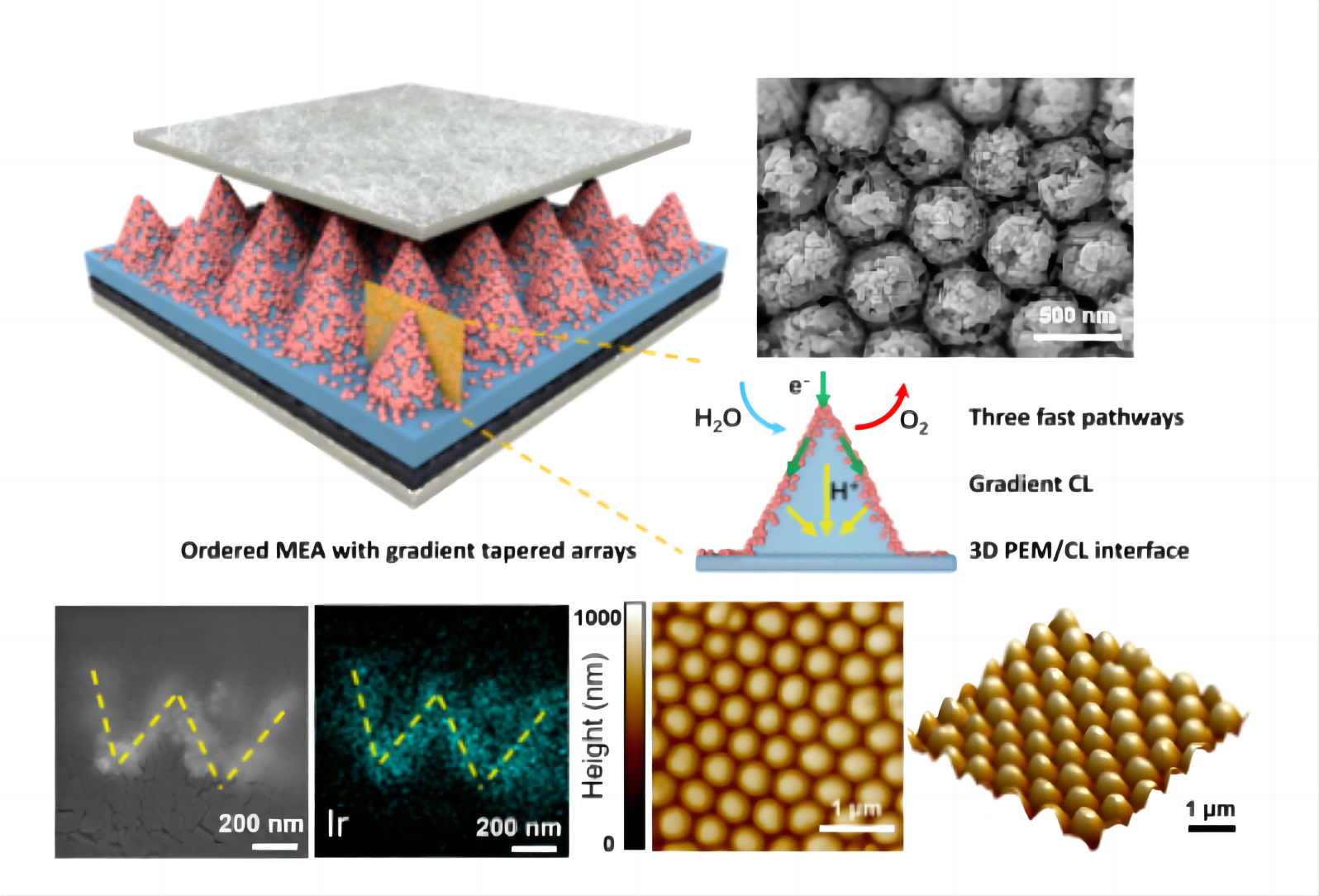- English
- Español
- Português
- русский
- Français
- 日本語
- Deutsch
- tiếng Việt
- Italiano
- Nederlands
- ภาษาไทย
- Polski
- 한국어
- Svenska
- magyar
- Malay
- বাংলা ভাষার
- Dansk
- Suomi
- हिन्दी
- Pilipino
- Türkçe
- Gaeilge
- العربية
- Indonesia
- Norsk
- تمل
- český
- ελληνικά
- український
- Javanese
- فارسی
- தமிழ்
- తెలుగు
- नेपाली
- Burmese
- български
- ລາວ
- Latine
- Қазақша
- Euskal
- Azərbaycan
- Slovenský jazyk
- Македонски
- Lietuvos
- Eesti Keel
- Română
- Slovenski
- मराठी
- Srpski језик
Progress has been made in the study of proton exchange membrane electrolysis for hydrogen production from water
2023-02-18
A team led by Yang Hui, a researcher at the Shanghai Institute for Advanced Studies of the Chinese Academy of Sciences, has made important progress in hydrogen production by proton exchange membrane electrolysis. The Overall design of anode with gradient ordered structure with low iridium loading for proton exchange membrane water electrolysis, published in Nano Letters.
Proton exchange membrane hydroelectrolysis (PEMWE) is one of the key technologies for hydrogen production with zero carbon emission. At present, the high amount of precious metal Ir in anode side greatly increases the cost of PEMWE and restricts its commercialization process. Preparation of catalyst with high activity and low Ir content is a common method to reduce the amount of Ir. However, in the actual use of PEMWE, the membrane electrode (MEA) needs to be operated under high current density (≥1-2 A cm-2) to ensure efficient hydrogen production, so the problems of low catalyst utilization, high ohm resistance and limited mass transfer need to be solved at the same time. The construction of ordered MEA is expected to reduce electrocatalytic kinetics, mass transfer and ohmic loss at the same time, which is the goal of hydrogen fuel cell research, but it is quite challenging.
In view of this, from the perspective of MEA structural integration design, the scientific research team innovatively proposed to prepare a new type of ordered MEA with anode gradient conical array and three-dimensional membrane/catalytic layer interface by using nano-imprint technology and static method. Conical array and gradient catalytic layer structure increased the exposure of active sites; Gradient and three-dimensional membrane/catalytic layer interface enhance the interface bonding strength. Vertically arranged voids provide a fast channel for gas and liquid transmission. The MEA structure can simultaneously reduce the performance loss caused by electrocatalytic kinetics, ohm and mass transfer polarization. Compared with the conventional MEA with an Ir loading of 2 mg cm-2, the ordered structure increased the electrochemical active area by 4.2 times, and reduced the mass transfer and ohmic polarization overpotential by 13.9 % and 8.7 %, respectively. The new ordered MEA showed excellent performance of 1.801V@2A cm-2 when the Ir load was as low as 0.2 mg cm-2, which was comparable to the traditional MEA structure with ten times the Ir load, and showed good stability. This study provides a new strategy for the development of PEMWE with high performance, low noble metal catalyst load and long life.






